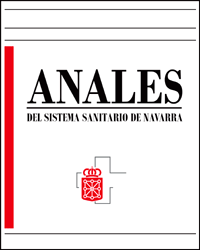Henna tattooing in children: natural or temporary?
Keywords:
Dermatitis alérgica de contacto. Tatuaje de henna. Parafenilendiamina.Abstract
Background. Tattoos of natural red/brown henna obtained from the indigenous tree Lawsonnia have been traditionally performed with a few side-effects. Nowadays black henna tattoos are usually performed even in children. The addition of several chemical agents to improve its cosmetic properties has increased the risk of developing contact dermatitis after exposure. Our aim is to determine the causative agents of contact dermatitis in two children wearing henna tattoos. Material and Methods. Case 1: A 12-year-old girl with no atopy presented local vesicles 10 hours after a black henna tattoo was applied. She had presented similar symptoms with a previous tattoo. Case 2: A 7-year-old atopic boy presented vesicles 2 weeks after a black henna tattoo was applied. He had dyed his hair previously without side effects. Both patients cured, after 3-4 weeks of treatment with topic corticosteroids, with residual hypo-pigmentation. Skin prick test with natural and commercial henna and epicutaneous test with TRUE-TEST®, PABA derivatives compounds tests, textile dyes and natural and commercial henna were performed. Results. The epicutaneous tests were positive for p-Metilaminophenol, p-Aminobencene, p-Phenilendiamine and p-Toluenodiamine in both patients. The first patient had also positive tests for Benzocaine, Hydroquinone, Isobutyl p-aminobenzoate, Yellow 1 and Orange 1 disperse; the second one for Red 1 and Orange 1 disperse. In both cases the prick and epicutaneous tests for henna were negative. Conclusions. Two children presented contact dermatitis after black henna tattoo due to added additives such as paraphenilendiamine.Downloads
Downloads
Published
How to Cite
Issue
Section
License
La revista Anales del Sistema Sanitario de Navarra es publicada por el Departamento de Salud del Gobierno de Navarra (España), quien conserva los derechos patrimoniales (copyright ) sobre el artículo publicado y favorece y permite la difusión del mismo bajo licencia Creative Commons Reconocimiento-CompartirIgual 4.0 Internacional (CC BY-SA 4.0). Esta licencia permite copiar, usar, difundir, transmitir y exponer públicamente el artículo, siempre que siempre que se cite la autoría y la publicación inicial en Anales del Sistema Sanitario de Navarra, y se distinga la existencia de esta licencia de uso.








